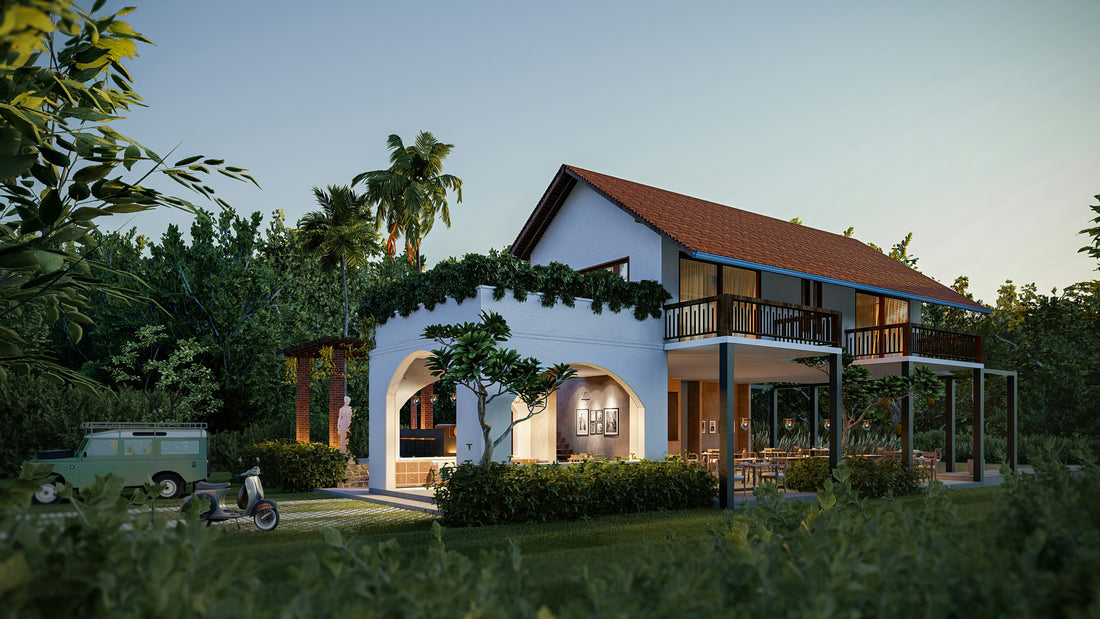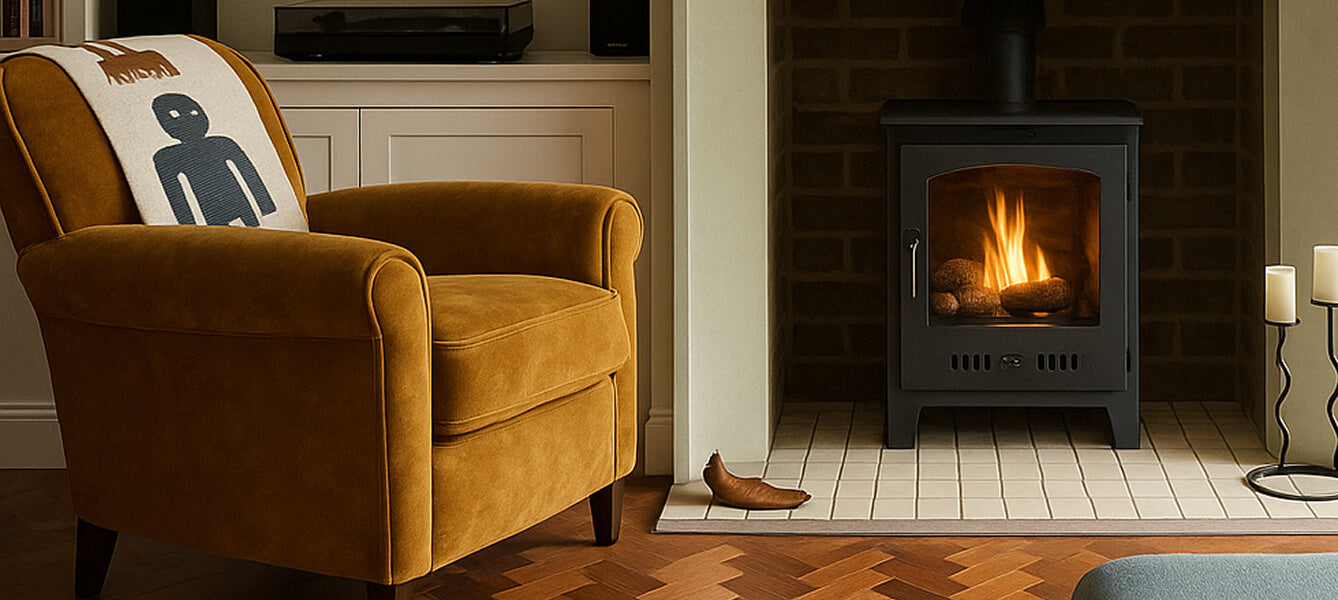
Biophilic Design: Principles, Patterns, and Benefits for Interiors
Biophilic design is increasingly important in modern interior design. This growing trend focuses on incorporating natural elements into interiors to enhance our connection with nature and enjoy the many benefits this brings.
But what exactly is biophilic design?
In this guide, we look at the principles, patterns and benefits of biophilic design so you can take advantage of it in your own home.
What Is Biophilic Design?

Biophilic design comes from the word ‘biophilia’, which refers to the human connection to nature. Edward O. Wilson, an American biologist, coined the term back in the 1980s, and it refers to the human need to connect with the natural world.
As such, the main purpose of biophilic design is to create environments that connect people more closely to nature. This is achieved through using nature-inspired elements and creating spaces that enhance rather than hinder our well-being.
Essentially, biophilic design is focused on bridging the gap between the manmade environment and nature by incorporating more elements of nature into our living and work spaces.
Core Biophilic Design Principles

There are several principles that are essential to biophilic design that aim to reconnect people with nature. When making changes to your own home, you can apply these principles to enhance your living space.
Direct Contact with Nature
The direct contact with nature is one of the most important principles of biophilic design. This typically means incorporating natural elements into the interior that you can see, touch, hear and smell.
From plants that enhance the space visually and improve the air quality to indoor fountains that introduce the soothing sound of flowing water into your space, these elements are essential for effective biophilic design.
This principle can also include incorporating views of outdoor landscapes, like improving the view of your garden to create a strong visual connection with the outside world.
Indirect Contact with Nature

This principle refers to design elements that evoke the feeling of being surrounded by nature, but without relying on the use of living organisms.
This often means making use of materials and colours that mimic nature. For example, natural materials like wood, stone and bamboo for the floors and furniture help to increase a sense of grounding and a connection to the outdoors.
Using colours that are inspired by nature, like greens, browns and blues, also increases the feeling that you are connected to the environment.
It can also include the use of sustainable materials and eco-friendly design elements, like installing a bioethanol fireplace or using solar-powered lightning, to help connect your interior space with the natural world.
Spatial Design
The principle of spatial design focuses on how the layout of the room can create a more harmonious relationship between the interior and the natural world.
One of the most important aspects of this is optimising the flow of natural light by strategically placing windows and skylights to maximise the amount of sunlight entering the room.
The careful placement of windows and doors can also enhance airflow by allowing fresh air to circulate, mimicking the natural breeze outdoors.
Open-plan layouts tend to work well with biophilic design by creating an expansive feeling and mimicking a wide-open space outdoors,
Patterns in Biophilic Design
Patterns in biophilic design refer to recurring themes and elements that mimic natural forms. Biophilic patterns are inspired by organic structures found in nature to evoke a sense of harmony and tranquillity indoors.
For example, you can incorporate biomorphic forms via the use of shapes and curves that resemble living organisms like shells, waves and leaves. These soft organic lines can be used in furniture, fixtures, wallpaper, artwork and more to create a natural flow.
It can also include the incorporation of dynamic lighting patterns that mimic the changing light throughout the day. Integrating these biophilic patterns helps to deepen the connection to nature.
The Benefits of Biophilic Design

There are several reasons why people incorporate biophilic design into their homes. Here are the most important benefits you can enjoy:
Improve Overall Well-Being
Perhaps the most important reason why biophilic design is becoming increasingly popular is because it can help to improve well-being.
It’s long been known that a greater connection with nature has a positive impact on us. Spending a bit of time outdoors surrounded by the natural world, or simply enjoying views of nature, is an easy mood booster.
When we feel happy, this impacts our mental health, helping to create a sense of calm and tranquillity, reducing stress and boosting mood.
This can even lead to improved productivity. A scientific study showed that adding plants to offices leads to a 15% increase in productivity, so this is important if you work from home.
Natural elements can help to stimulate the brain, which could also help to encourage creative thinking.
Improve Physical Health
Just as biophilic design can improve your mental health, it could also provide physical health benefits.
Stress can impact your physical health and cause illness and fatigue. By increasing your connection with nature, you could help to reduce stress.
Improved air quality can also have a direct impact on health, and good ventilation and fresh air have a positive and invigorating impact. Increasing the amount of natural light in your home can also help to regulate circadian rhythms.
Live a More Sustainable Lifestyle

Living a more sustainable lifestyle is often one of the benefits of incorporating biophilic design.
People who want a more biophilic environment will often want to lead a more sustainable lifestyle, leading to reduced energy consumption and a focus on more sustainable choices, like using a bioethanol fireplace instead of burning gas. Such changes can even lead to cost savings.
Improve Social Interactions
Biophilic communal areas spaces in homes or the workplace can lead to better social interactions. These environments are more inviting and comforting, and they can help people to feel more relaxed.
Living rooms, dining areas and offices can all benefit from biophilic design, where improving social connections is important.
Enhance Aesthetic Appeal
While biophilic design can be beneficial for health and well-being, it also has aesthetic value. Incorporating natural elements creates an environment that is visually pleasing and calming, and it can make any interior space feel more welcoming.
Incorporate Biophilic Design into Your Home

We could all do with connecting more with nature, especially those who live in urban areas. From improving your health and well-being to living more sustainably, there are many potential benefits of incorporating biophilic design into your home or workplace.
So consider the core principles and patterns of biophilic design outlined in this guide, then think about how you can incorporate them into your interior to enjoy the many benefits for yourself.
